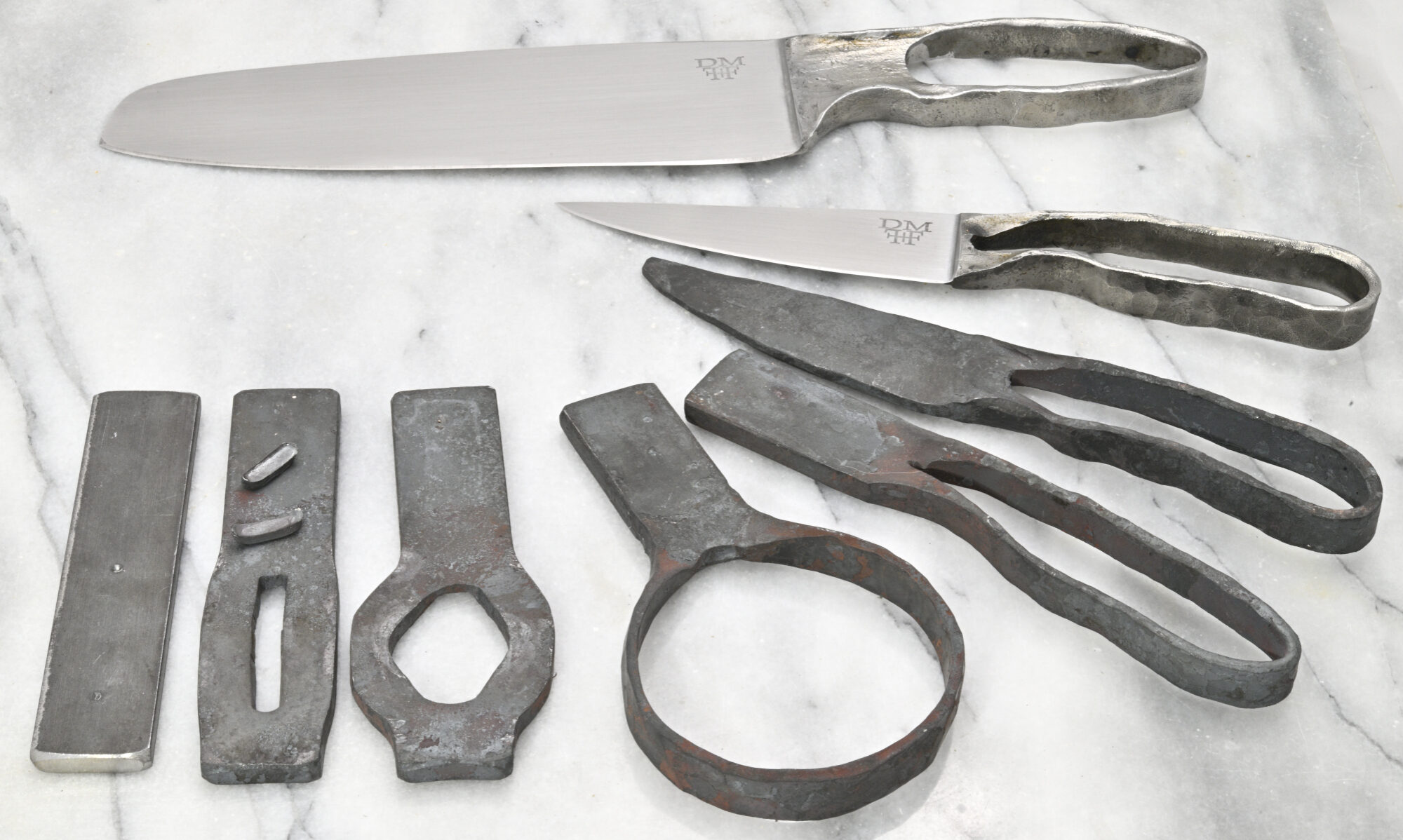
There are plenty of different ways to sharpen simple carbon steels, just about every abrasive will work. Simple carbon steels form primarily iron carbides when hardened, which aren’t as hard as other carbides that make ‘super steels’ a pain to sharpen. Simple carbon steels can be hardened to low 60’s on the Rockwell C scale and will hold an edge extremely well when cutting normal materials (I don’t consider sandpaper to be a normal material, although I do cut it regularly sizing sandpaper for a 9″ disc grinder).
I strongly recommend learning freehand sharpening, it’s simple to learn with good instructions/guidance and a great skill to learn. Once you’ve got the muscle memory down then just about anything harder than the steel will work for sharpening a simple carbon steel blade if you don’t have a sharpening stone with you but want to touch up an edge.
Murray Carter has a great DVD on sharpening that he uploaded to youtube for free viewing – I highly recommend this as a starting point for learning freehand sharpening, practice a few times a week with your least favorite kitchen knife:
For kitchen knives and finer slicing knives this is more/less the method I use, starting with 1k King stones and then moving to 6k King stones to finish. As the King stones need to be saturated, I store them in water on the counter next to the laundry room sink (change the water every 6 month or so to prevent small civilizations from forming in there.) When traveling (camping/roadtrip/backpacking/knife shows) I usually opt for diamond stones or ceramics where I don’t need so much water. They just need to be cleaned frequently with a little water and Barkeeper’s Friend or Comet powder, otherwise the removed steel clogs up the abrasives.
For general use knives I prefer a bit of a convex edge that can take a bit more abuse. To define the edge bevels, I use a rotary platen on my 2×72 belt grinder with 220 grit belt. The rotary platen is belt supported and lets me set the half-angle by rotating the set of wheels and checking the angle with a digital level. This lets me dial in 30, 35 or 40 degree total angle bevels quickly and easily by grinding with the edge facing down and perpendicular to the ground.

Once I build up a burr along the entire length of the edge then I remove that burr on a buffer. I prefer a medium felt wheel with pink scratchless compound but white or green compound work fine as well as will other buffing wheels. Quick and easy way to put a bevel and final edge on a blade. Just clean off any compound that built up on the blade.

One thing to keep in mind with sharpening – the finer the edge, the more frequently you will need to maintain it… Strops loaded with compound (diamond, buffing compounds/rouge etc) are a quick way to touch up an edge that just lost it’s hair-popping sharpness.
